Abstract
A comparison has been made between the incidence of salmonellas in pigs and feeding stuffs in England and Wales and in Denmark. In Denmark there is veterinary legislation requiring the sterilization of imported and home produced feed ingredients of animal origin. There is no such legislation in England and Wales. In Denmark 0·3% of resterilized imported meat and bone meal was contaminated with salmonellas. This compared with 23% of meat and bone meal in England and Wales and 20-27% of other ingredients of animal origin. In England and Wales salmonellas were isolated from 7% of caecal samples and 6% of lymph node samples, while in Denmark they were isolated from 3% of caecal samples and 4% of lymph node samples. In England and Wales 25 serotypes were found in both pigs and feeds and these included nearly all the most prevalent human pathogens. In Denmark four of the six serotypes in pigs had been found in resterilized feed. One notable difference between the two studies was the very wide range of serotypes found in pigs in England and Wales and the narrow range in Denmark. A second was that Salmonella typhimurium formed 15% of all Salmonella strains isolated from pigs in England and Wales, and 60% of those in Denmark.
It is concluded that sterilization of animal raw ingredients in Denmark has reduced pig infections with types other than S. typhimurium that are found in England and Wales, but not with S. typhimurium. It is possible that this is because S. typhimurium once introduced into pigs is able to establish itself more easily than other serotypes.
Full text
PDF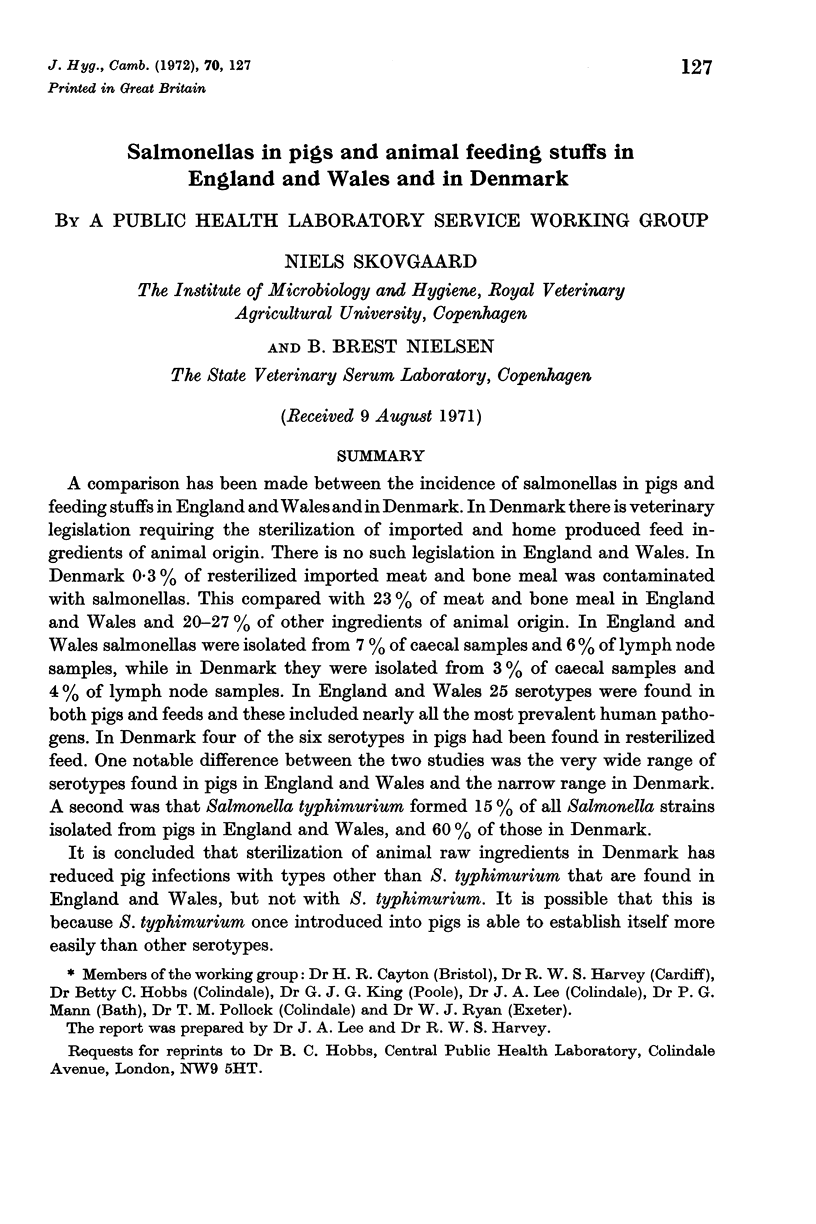
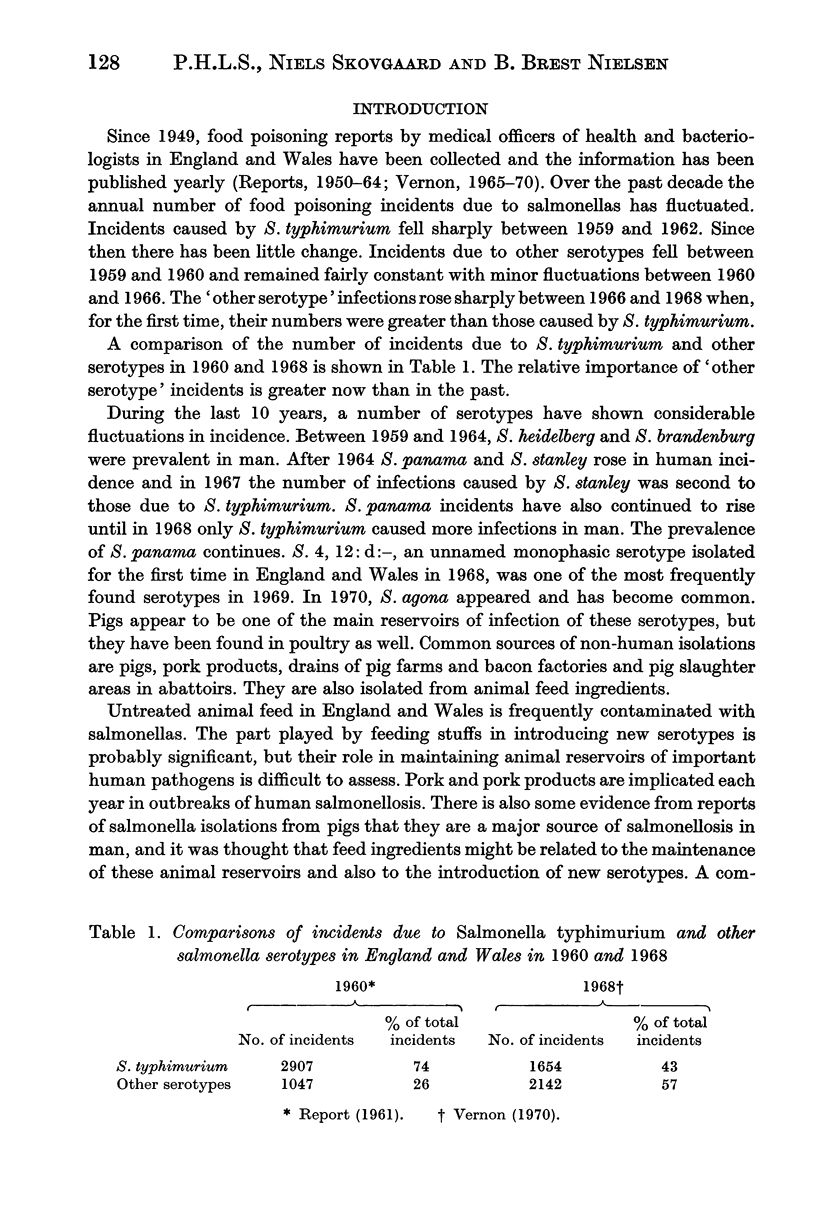
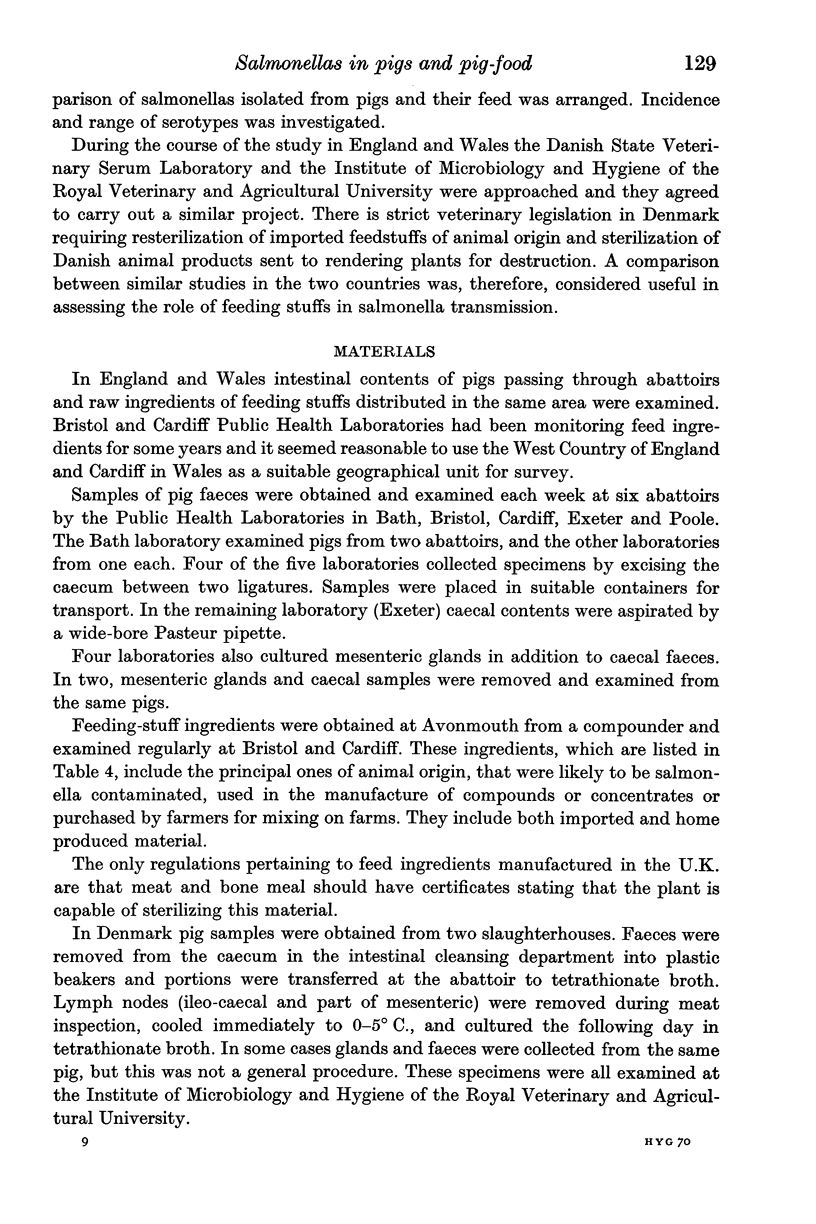
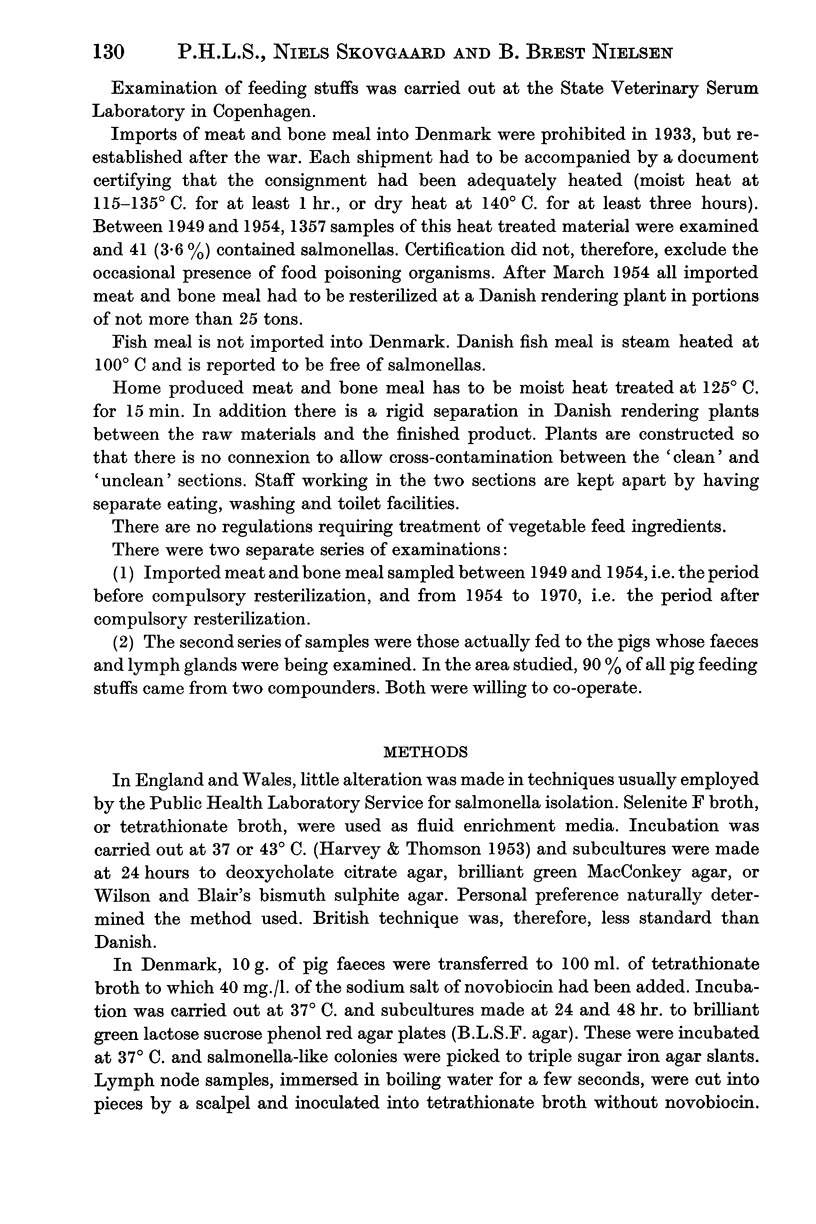
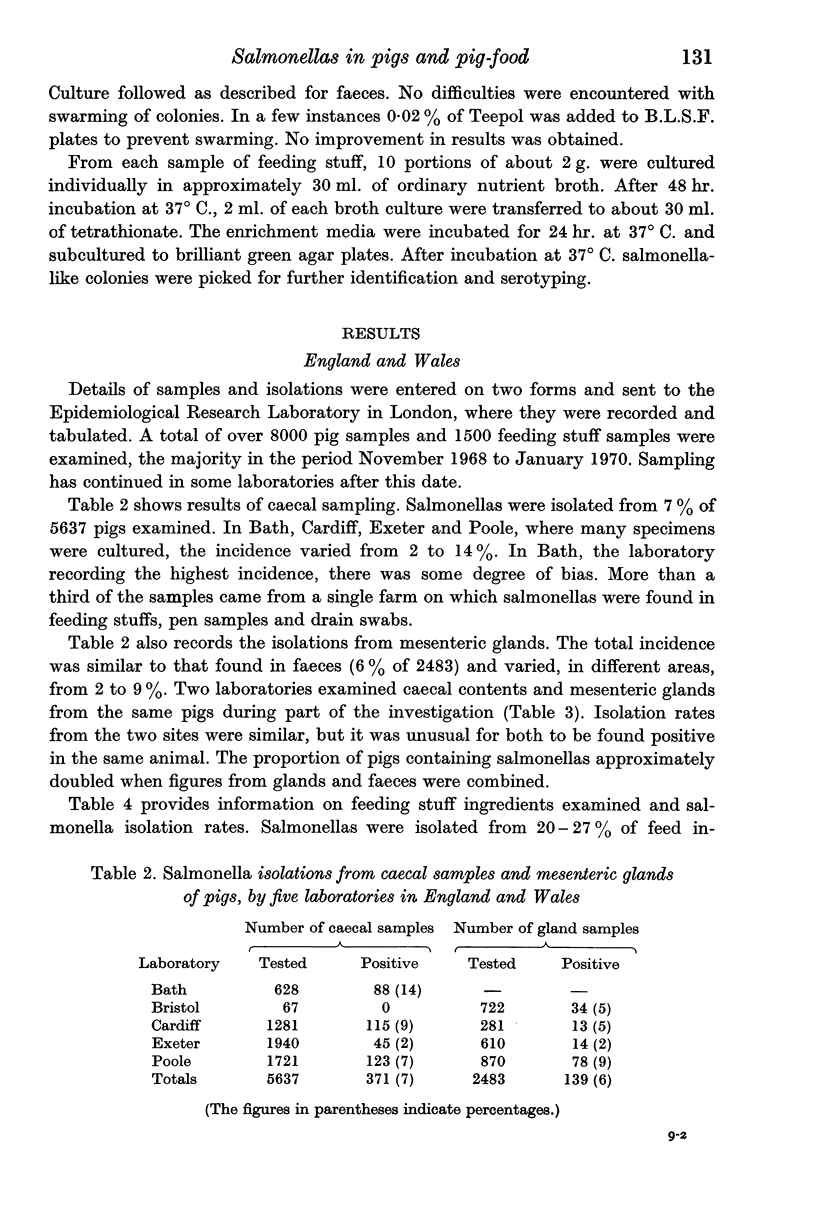
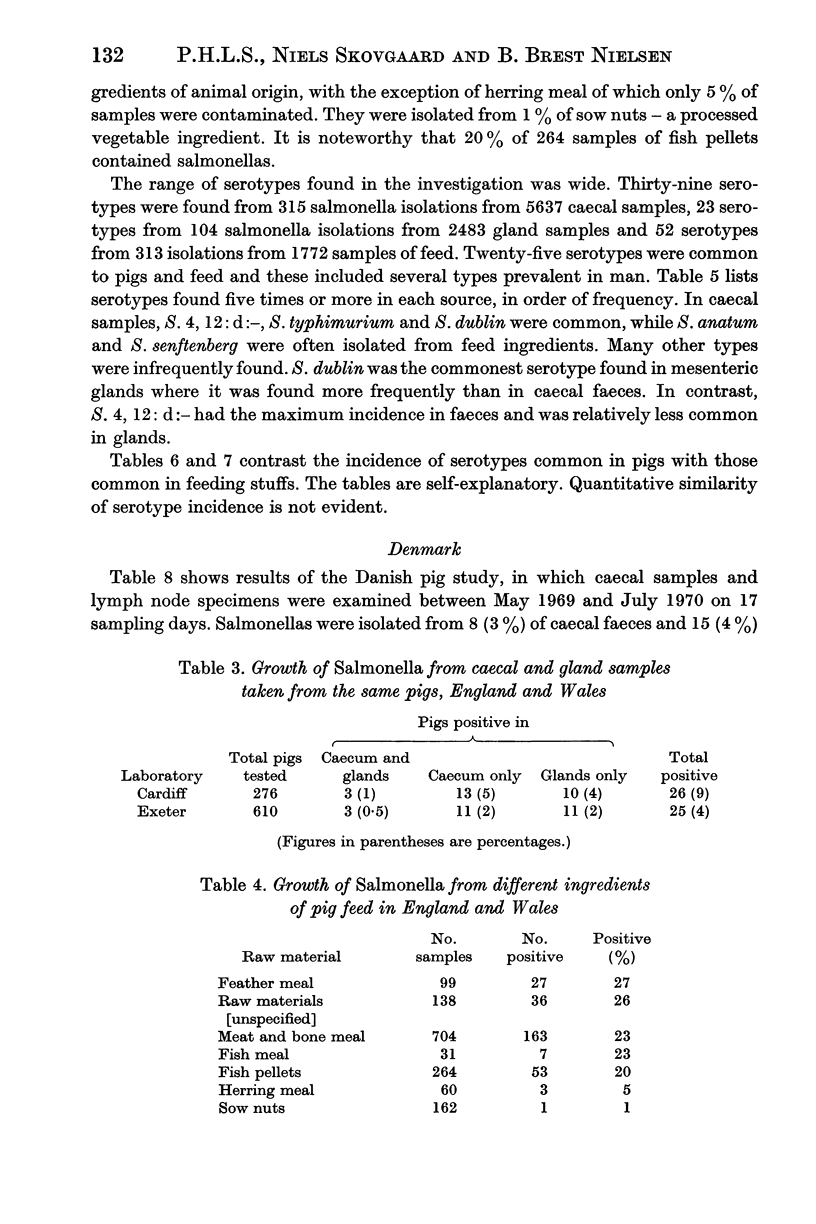
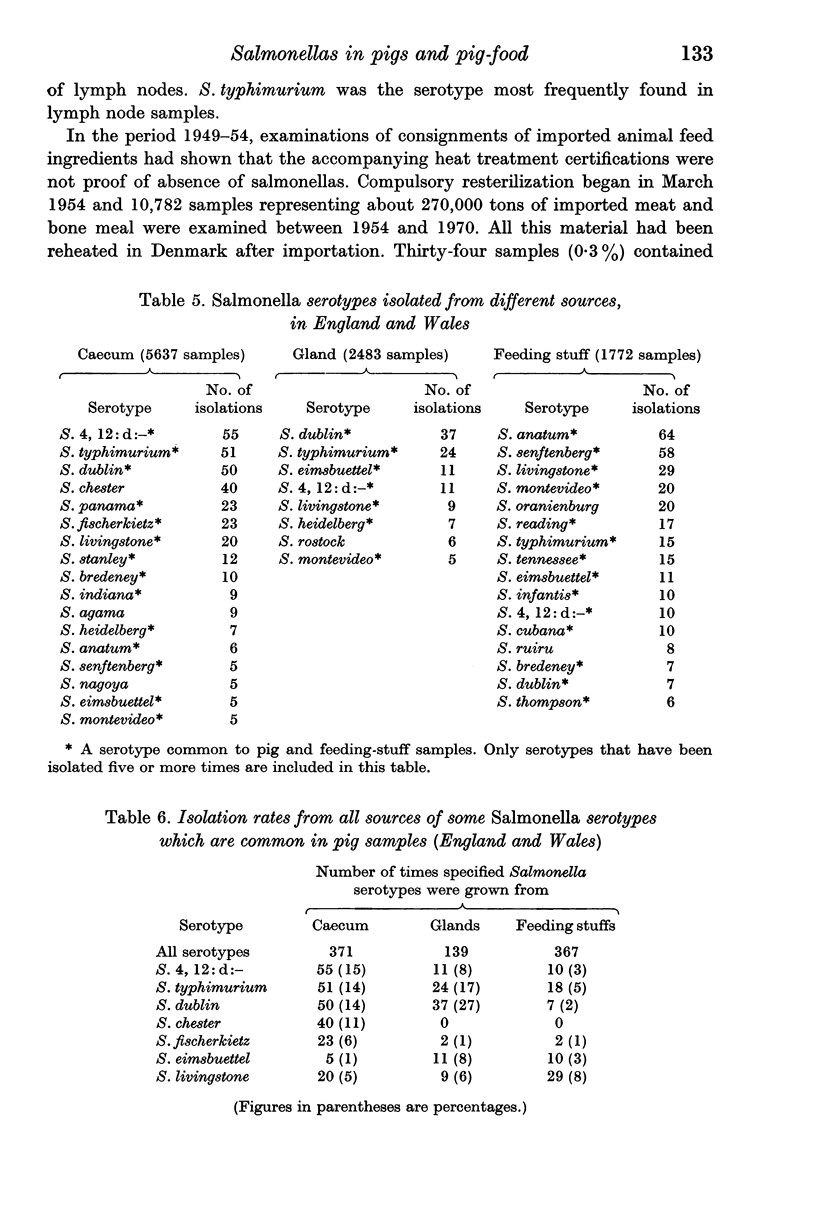
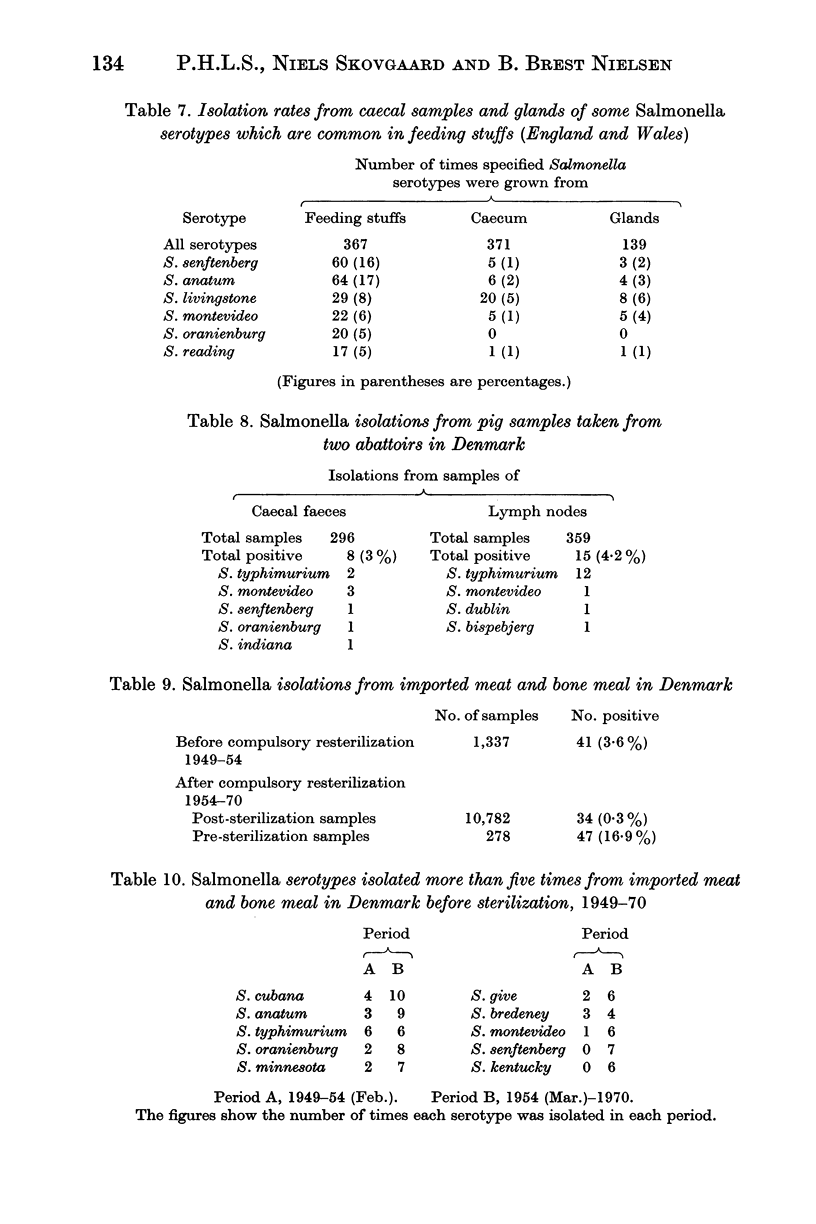
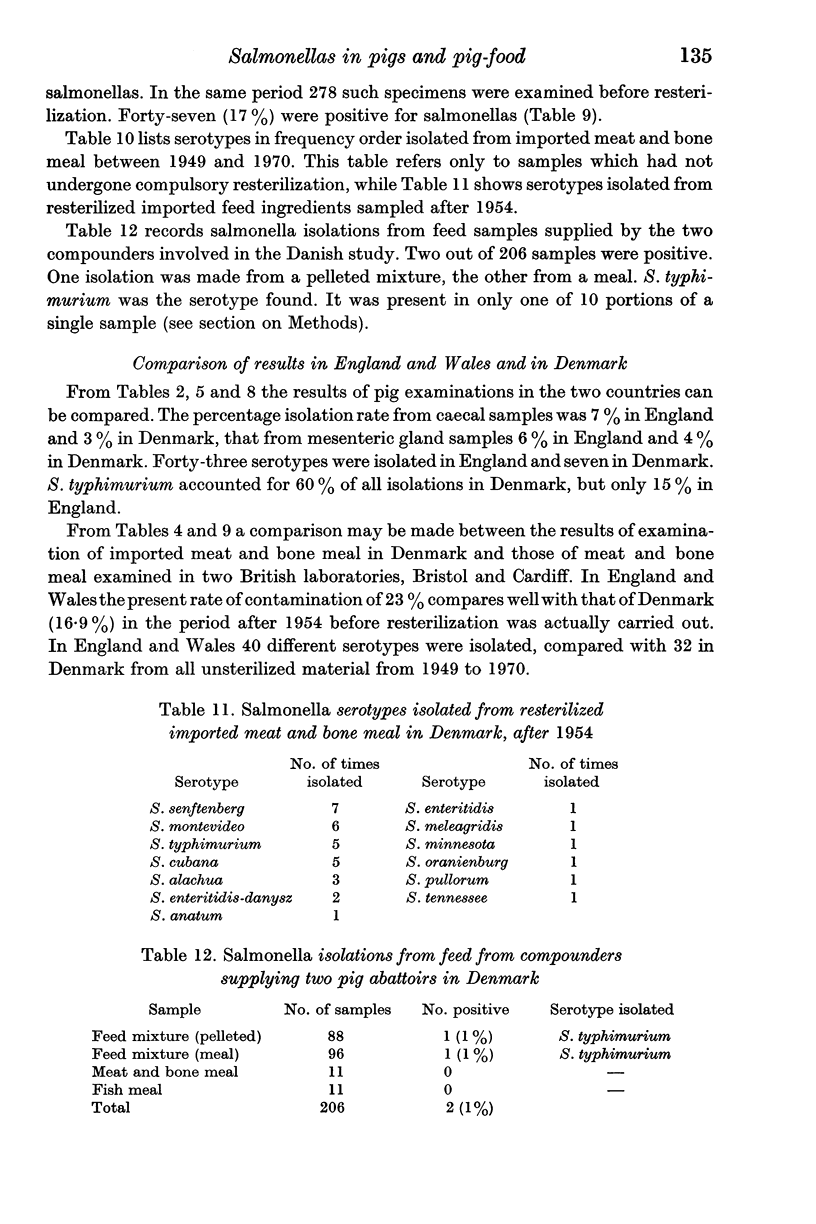
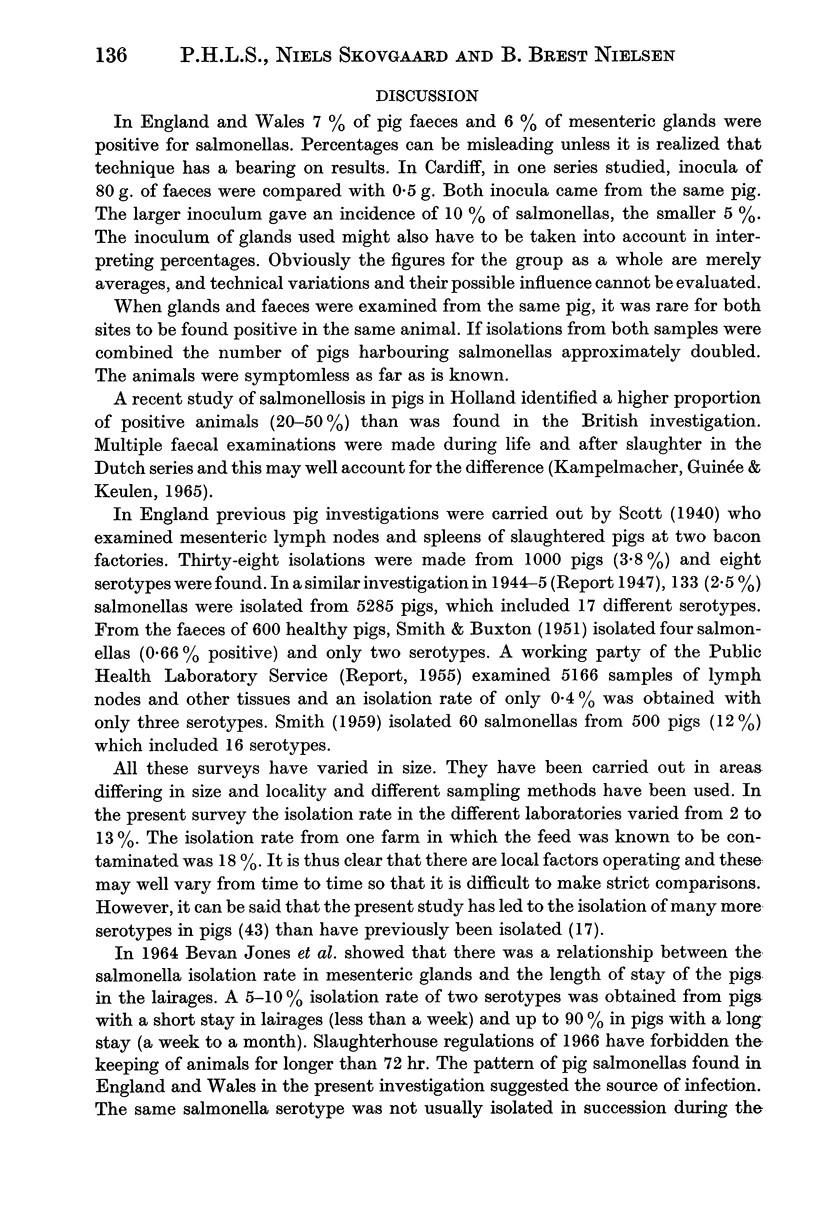
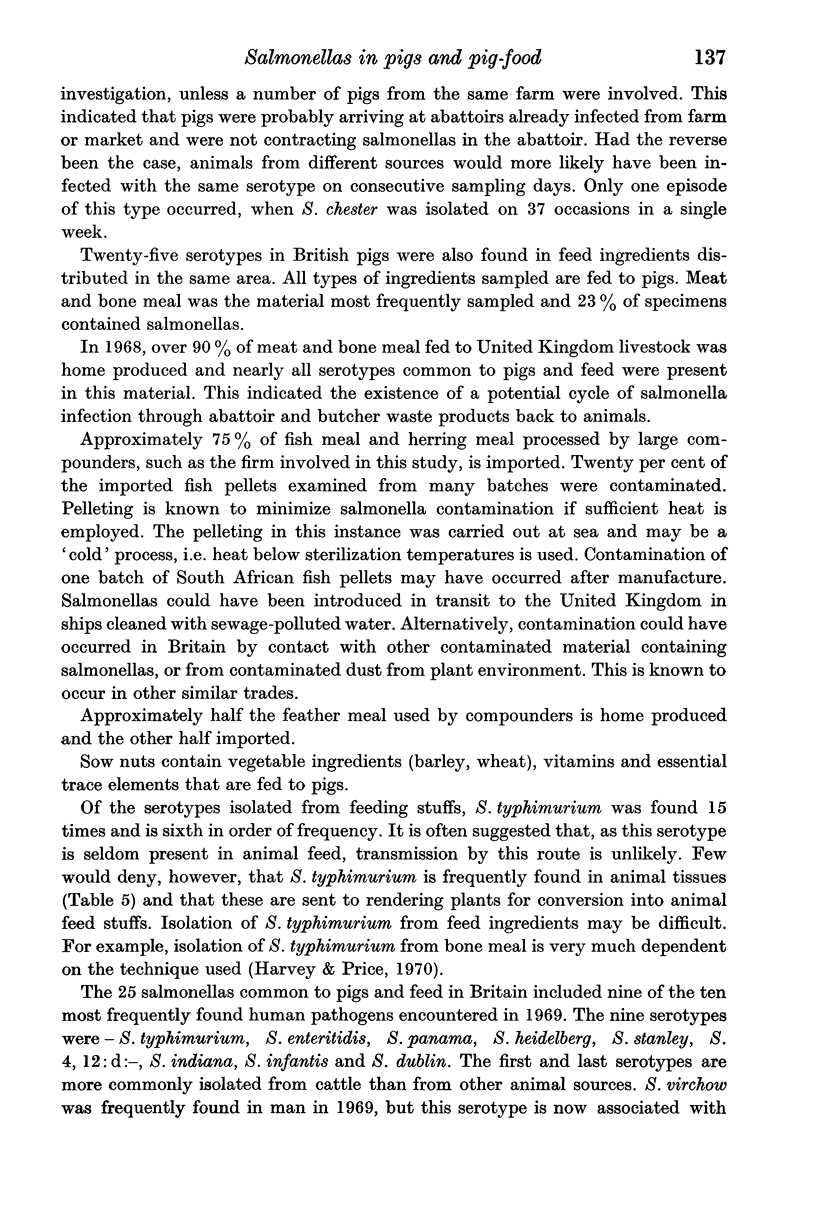
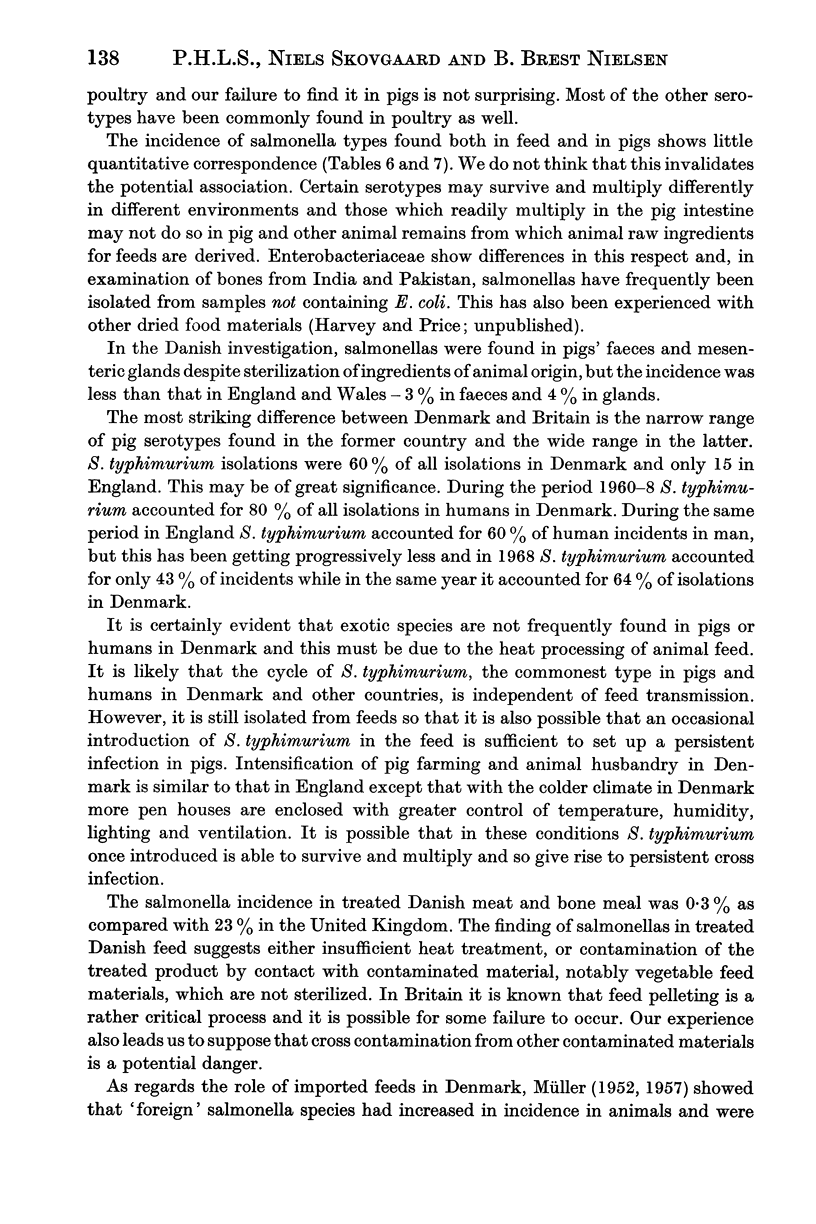
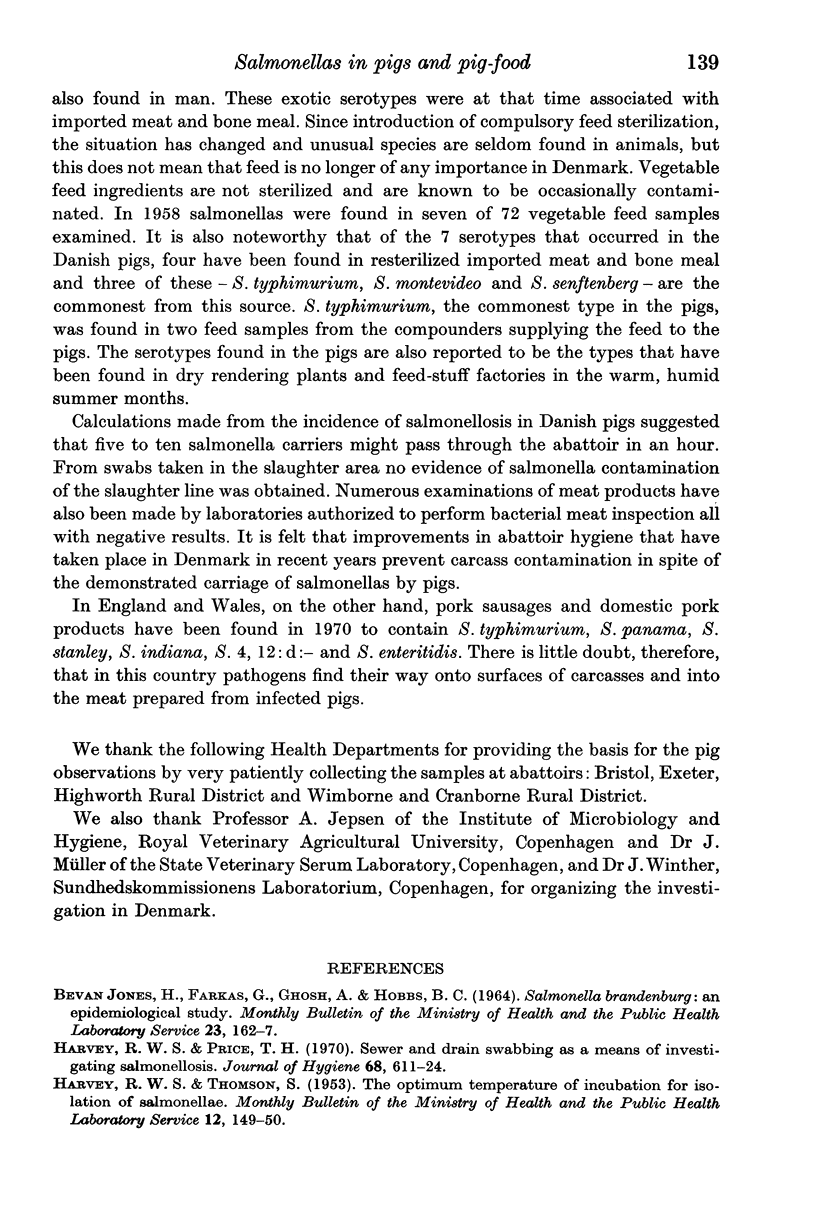
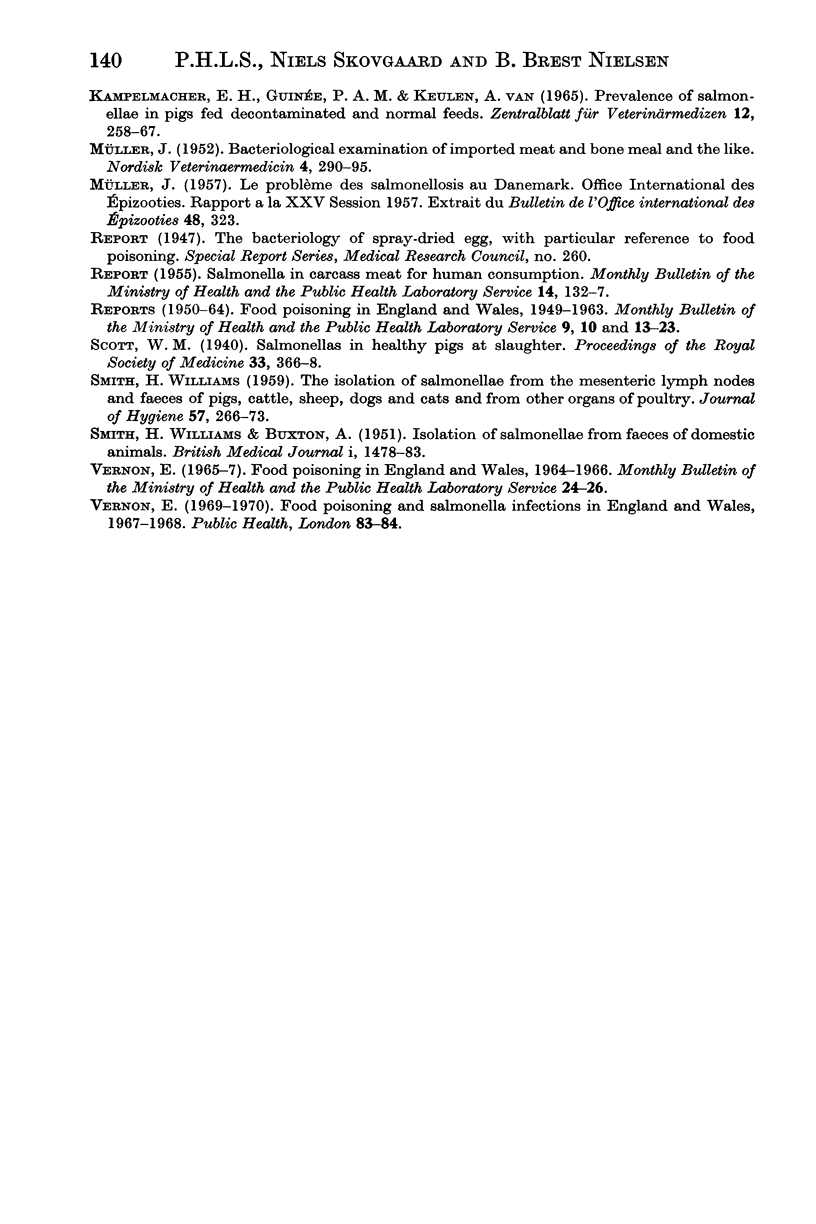
Selected References
These references are in PubMed. This may not be the complete list of references from this article.
- HARVEY R. W., THOMSON S. Optimum temperature of incubation for isolation of Salmonellae. Mon Bull Minist Health Public Health Lab Serv. 1953 Jul;12:149–150. [PubMed] [Google Scholar]
- Harvey R. W., Price T. H. Sewer and drain swabbing as a means of investigating salmonellosis. J Hyg (Lond) 1970 Dec;68(4):611–624. doi: 10.1017/s0022172400042546. [DOI] [PMC free article] [PubMed] [Google Scholar]
- JONES H. B., FARKAS G., HOBBS B. C. SALMONELLA BRANDENBURG: AN EPIDEMIOLOGICAL STUDY. Mon Bull Minist Health Public Health Lab Serv. 1964 Sep;23:162–177. [PubMed] [Google Scholar]
- Kampelmacher E. H., Guinée P. A., van Keulen A. Prevalence of salmonellae in pigs fed decontaminated and normal feeds. Zentralbl Veterinarmed B. 1965 May;12(3):258–267. doi: 10.1111/j.1439-0450.1965.tb01390.x. [DOI] [PubMed] [Google Scholar]
- SMITH H. W., BUXTON A. Isolation of Salmonellae from faeces of domestic animals. Br Med J. 1951 Jun 30;1(4721):1478–1483. doi: 10.1136/bmj.1.4721.1478. [DOI] [PMC free article] [PubMed] [Google Scholar]
- SMITH W. H. The isolation of salmonellae from the mesenteric lymph nodes and faeces of pigs, cattle, sheep, dogs and cats and from other organs of poultry. J Hyg (Lond) 1959 Sep;57:266–273. doi: 10.1017/s002217240002012x. [DOI] [PMC free article] [PubMed] [Google Scholar]


